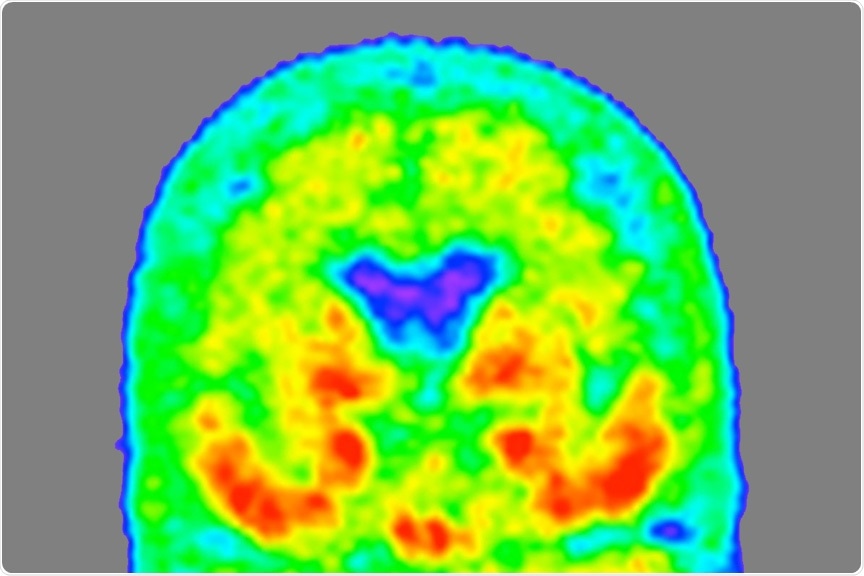Scientists at Washington University School of Medicine, Missouri, have identified a novel form of an Alzheimer’s protein in the spinal fluid of patients. The research findings will likely influence the development of more effective diagnostic methods and may help improve treatment outcomes.

Image Credit: Tammie Benzinger/Knight ADRC
A need for early diagnosis of Alzheimer's
In a study published this month in the journal Brain, researchers outline how they found a novel form of tau proteins within the fluid surrounding the brain and spinal cord. Their findings indicate that this protein can be used to determine the stage of the disease, as well as monitor the dispersion of the tau protein tangles synonymous with Alzheimer’s.
The spread of tau proteins in the brain is often linked with the level of cognitive decline seen in Alzheimer’s patients. They are often identified as the disease progresses and patients begin presenting symptoms.
Washington University researchers have identified a microtubule-binding region tau (MTBR tau) present in the spinal fluid that may provide an avenue to early diagnosis, allowing physicians to prevent the development of the disease before it has progressed to the symptomatic stage where much damage has already occurred.
Identifying a biomarker of Alzheimer’s
Alzheimer’s disease begins as amyloid proteins begin accumulating, forming plaques in the brain. Unfortunately, this process often begins years, even decades before symptoms develop. At this point, much irreversible damage has happened. Using this MTBR tau fluid biomarker doctors will be able to measure the levels of the tau protein that builds these plaques, allowing them to assess the stage of the disease without the need for a brain scan, and could potentially be used to screen patients before they present signs of cognitive decline.
If we can translate this into the clinic, we'd have a way of knowing whether a person's symptoms are due to tau pathology in Alzheimer's disease and where they are in the disease course, without needing to do a brain scan. As a physician, this information is invaluable in informing patient care, and in the future, to guide treatment decisions.”
Randall J. Bateman, MD
Currently, positron emission tomography (PET) scans are required to detect tau tangles in the brain. However, these are time-consuming and expensive. The identification of the MTBR tau fluid biomarker will allow scientists to develop more accessible, cost-effective testing. Bateman and his colleagues are currently working on establishing a diagnostic blood test with the help of this biomarker.
While previous studies that have attempted to use antibodies against tau to detect MTBR tau in the cerebrospinal fluid had failed, researchers at Washington University adapted the method, purifying tau out of a solution and then conducting mass spectrometry. This technique was used to analyze the cerebrospinal fluid of 100 people, 30 with no signs of Alzheimer’s and no cognitive impairment, 58 with amyloid plaques but no cognitive symptoms, and 12 with cognitive impairment caused by other conditions.
The analysis revealed that levels of MTBR tau 243 were elevated in the cerebrospinal fluid of those with Alzheimer’s and that these levels were correlated to the severity of cognitive impairment.
The researchers compared their new method to the gold standard of measuring tau in the brain, tau-PET brain scans. The results showed that the levels of MTBR tau 243 measured by the researchers’ new method was highly correlated with the levels of tau indicated by the brain scans.
Therefore, demonstrating that the MTBR tau fluid biomarker could be used to establish a new, inexpensive, and rapid method of screening those at risk of Alzheimer’s, as well as measuring disease progression by quantifying the level of brain damage.
As first author Kanta Horie concludes, this key finding “opens up new windows for novel therapeutics for Alzheimer's disease based on targeting MTBR tau to stop the spread of tangles.”